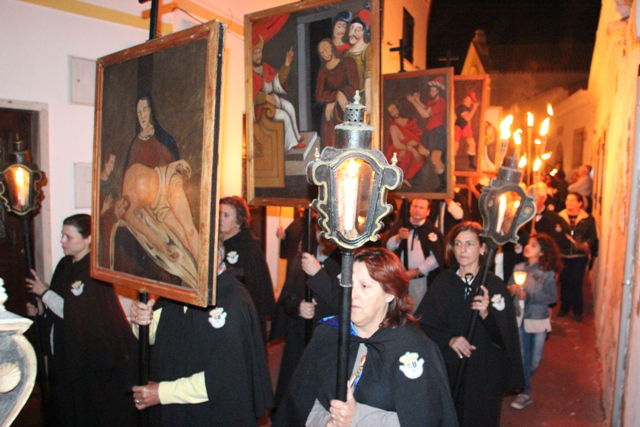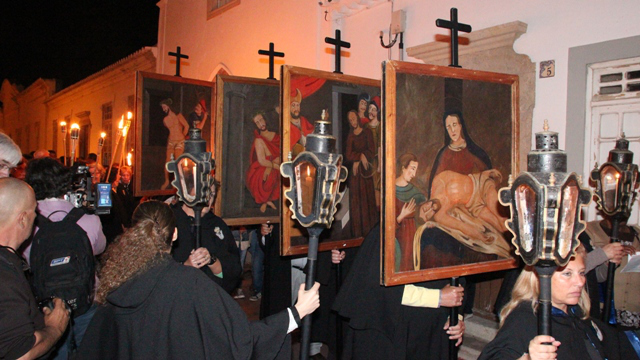 From the 21th-century Capela da Misericórdia in Albufeira, the Procession of the Panels of the Santa Casa da Misericórdia departs tonight, at 00 pm, held by the members of the Brotherhood in the celebration of Maundy Thursday.
From the 21th-century Capela da Misericórdia in Albufeira, the Procession of the Panels of the Santa Casa da Misericórdia departs tonight, at 00 pm, held by the members of the Brotherhood in the celebration of Maundy Thursday.
Tomorrow, Good Friday, the Procession of the Dead Lord will take place, in which, under a canopy, the “tombinho” with the body of Jesus Christ will follow. It is the religious tradition that marks one of the most emblematic moments in the Christian calendar.
The Procession of Panels of Mercy, promoted by the Brotherhood, is one of the most imposing religious manifestations, recently recovered in the Municipality of Albufeira.
The procession will start at the Chapel of Misericórdia in Albufeira, passing by the Church of Santa Ana and ending at the Igreja Matriz, where the Adoration of the Blessed Sacrament will take place.
The procession, accompanied by the sound of the rattle and the rhythm of the drums, takes place with the public network lighting turned off, creating a mystical atmosphere, accentuated by the light of candles, torches and lamps that illuminate the route.
These panels, probably from the XNUMXth century, belong to Misericórdia, representing Scenes from the Passion of Christ.
 The following day, Good Friday, there will be what is popularly referred to as the “Procession of the Dead Lord”. It is the Procession of the Passion of the Lord with Adoration of the Cross and Communion and Procession of the Burial of the Lord. The ceremony starts at 17:00 at the Igreja Matriz and the procession will pass through the streets of the Historic Center of the city. Accompanying these Processions, the Scouts also make their presence felt.
The following day, Good Friday, there will be what is popularly referred to as the “Procession of the Dead Lord”. It is the Procession of the Passion of the Lord with Adoration of the Cross and Communion and Procession of the Burial of the Lord. The ceremony starts at 17:00 at the Igreja Matriz and the procession will pass through the streets of the Historic Center of the city. Accompanying these Processions, the Scouts also make their presence felt.
The Misericórdia Chapel of Albufeira, until 1499, was the site of an old Muslim mosque. It was affected by the 1755 earthquake, after which the original body and portal were reconstructed in Gothic style.
Inside, there is a carved altarpiece with an image of Nossa Senhora da Visitação and Senhor Morto, as well as the tomb of Rui Dias, who possibly would have been Mayor of the Castle.


















Comments